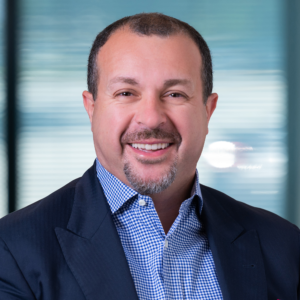Clinical Researcher—April 2023 (Volume 37, Issue 2)
GOOD MANAGEMENT PRACTICE
Dea Belazi
For the multitude of scientists, researchers, and professionals who are immersed in drug research and development (R&D), clinical trials, regulatory approvals, and other aspects of pre-commercialization, product launch dates seem too far off in the future and may not require immediate focus. However, whether the drug is first-to-market or a new indication, its launch, market access, and commercial success rely heavily upon careful consideration of the challenges as early as before Phase I—prior to the clinical trial phase, or about four to six years into development. This is a significant departure from legacy launch plans, which are now proving woefully inadequate for introducing a specialty drug or novel cell or gene therapy (CGT) in an increasingly complicated and challenging marketplace.
Establishing proof of concept, creating value throughout the product lifecycle, and realizing the full potential of the therapy, from the day of launch and beyond, requires manufacturers to dedicate as long as three to four years of effort about mid-way into the development process.{1} Since it takes an average of 10 years to develop a potential new medicine{2} for treating a complex condition or rare or orphan disease, strategic go-to-market planning can never begin too soon. The fallout of risks from delaying the planning for a CGT could be disastrous, resulting in a significant waste of time and money when the product fails to gain the acceptance of healthcare professionals or achieve optimal reimbursement.
Launch Preparation Across Critical Business Functions
A carefully executed strategy enables manufacturers to address and overcome challenges, ensuring seamless product launches, improved medication access, and enhanced clinical outcomes for patients.
Capture Critical Data Supporting Payer Negotiations
Gathering the right clinical data and developing a safety profile during the drug development process not only helps to optimize pricing on the day of launch, but also impacts payer negotiations. Data collection is highly valuable because the disease burden is often not quantified for rare subpopulations indicated for CGT or certain orphan drugs. Data are also needed to engage in outcomes-based contracts and establish the causal relationships between the disease and outcomes.
To establish product safety, manufacturers must create a holistic projection of the product’s durable pipeline success and assess the direct financial impact on the payer through analyses of data that address:
- Dosing regimens
- Treatment durations
- Route(s) of administration
- Patient population size
- Specificity on the eligible patient population
- Benchmark prices
- Number of patient lives affected
- Long-term outcomes and real-world evidence supporting payers with early visibility into the total health system costs related to a particular disease
An astute payer negotiation team is a “must-have” in market preparation to ensure patient access to therapy and determine pricing and reimbursement at the time of launch. This requires a team of individuals with experience, expertise, industry contacts, and a track record of success for negotiating pricing strategies that work for the manufacturer and the health plan or self-insured employer group.
Optimize the Supply Chain
Demand forecasting should begin as early as three years before the actual launch to ensure that patient-specific doses are delivered just in time to sites of care. Many manufacturers look for clean, actionable, real-time data from one source for integrated support and collaboration. They also contract for exclusive drug distribution services with entities that specialize in rare diseases, since specialty medications and CGTs often require special handling, such as refrigeration, overnight delivery, and shipment tracking.
A distributor that focuses on this market sector has the experience to coordinate third-party logistics for warehousing or shipping, providing patients with uninterrupted therapy and access to medications they need when they need them most. Manufacturers appreciate this exclusive distribution model not only for significant cost savings, but also the assurances that the therapy itself is readily available since there is little room for failures, bottlenecks, or delays throughout the supply chain.
Streamline Care Continuum
One of the most important tasks is to anticipate requirements and barriers for healthcare professionals to communicate with insurance providers and external pharmacies. With a goal to streamline communications between clinicians, patients, and pharmacy, manufacturers should have methodologies and technologies in place that notify doctors if a patient is noncompliant with taking medication on schedule or as prescribed.
The prior authorization process is yet another area for attention, underscoring the important role of healthcare professionals as medication prescribers who provide vital assistance to ensure that a particular drug qualifies for coverage under the terms of the pharmacy benefit plan. Any breakdown or disruption in this communication channel will seriously compromise patient access to treatment and negatively impact outcomes.
Prepare Clinicians for Specialty Drugs, CGTs
Healthcare professionals typically deal with fewer specialty patients—and even fewer rare disease patients—which may make it more challenging to diagnose rare diseases. One survey{3} sought to promote understanding of these challenges, with findings that are consistent with small patient populations for each disease: lack of rare disease education and symptom awareness were the most common issues.
Healthcare professionals can also benefit from a clear understanding and awareness of medication costs, methods for communicating financial information with patients, and tools to help patients access necessary therapies and avoid missed doses or treatment lapses. While these professionals may be most familiar with “specialty” drugs, cell and gene therapies are not as common, largely because their practices may not include rare disease patients who would benefit. For these reasons, it is critical to provide full support for the therapy itself by offering evidence-based information and frequent updates.
The market is changing, emphasizing the need for clinician education that will be critical to market access. More than 900 Investigational New Drug applications{4} to the U.S. Food and Drug Administration (FDA) for ongoing clinical studies of gene therapy products are under way, and the agency is predicting it will be approving from 10 to 20 gene therapies per year. Cancer{5} is expected to be a big focus of specialty drug development and the current oncology pipeline is expected to add more than 100 new drugs in the next five years, which includes treatment through cell therapy, RNA therapy, and immuno-oncology treatments.
Identify Financial Solutions
As healthcare costs rise for both patients and payers,{6} development of new financing models such as value-based pricing and innovative financial offerings to address the high costs of novel treatments for payers. The introduction of customizable copay assistance programs is instrumental in helping to break down financial barriers to patient access of therapies.
Since the high list prices for specialty therapies aren’t likely to change, such as $3.5 million for Hemgenix, the new hemophilia gene therapy,{7} the demand grows for better financing mechanisms that address a payer’s fiscal responsibilities to these exorbitantly expensive products and lower out-of-pocket costs to patients. Risk-sharing mechanisms between pharmaceutical companies and payers are being introduced to proactively remove financial barriers, enhance medication access, and optimize outcomes.
One innovative program allows the extraordinarily high one-time costs of gene therapies and other expensive medications to be converted into smaller, predictable payments over time for payers. Another option is the outcomes-based pricing approach, such as the one employed for Zynteglo,{8} the blood disorder beta thalassemia with a list price of $2.8 million per treatment. In the case of Zynteglo, the biotech will refund up to 80% of the drug’s cost if it is not effective for the patient.
Innovative and specialized copay assistance solutions that support existing copay card programs help to ensure full transparency of transactions that guard against fraud, provide complete manufacturer oversight of copay fund usage, and protect the safety and security of funds. The most attractive options are programs that are compliant with the Centers for Medicare and Medicaid Services for eliminating financial barriers to accessing treatment and offer the benefits of block-chain technology to provide data security. When these capabilities are embedded into the program, they effectively minimize risk and assure that patients receive the full benefits of copay funds.
What’s Ahead
Life sciences companies are increasingly entering the rare disease space, with the market expected to grow{9} at a compound annual growth rate of 12.8% between now and 2030. Despite this growth, more than 90% of the 7,000 known rare diseases lack a treatment option.
Launching a specialty drug into the market not only requires additional planning and preparation time, but also expertise that differs from launching a drug used by a considerably larger population. Emerging and small to mid-size manufacturers do not typically have in-house capabilities for implementing end-to-end solutions that span the entire product lifecycle—from pre-commercialization/clinical trials through launch and market access—prompting many to work with a single-source solutions partner that provides customized programs to meet these challenges.
Through this approach, a company eliminates the need to engage with multiple vendors, eases administrative burdens, and collects purely actionable data from one source. An all-inclusive vendor that offers white-glove support and service will accelerate all processes and enable manufacturers to reach drug launch milestones. A strategic approach requires a patient-centric focus, progressive thinking, and careful attention to details as they impact patients, payers, and providers.
References
- Alfano S, Gorham A, Loche A, Salazar P. 2022. Eight imperatives for launching cell and gene therapies. https://www.mckinsey.com/INDUSTRIES/LIFE-SCIENCES/OUR-INSIGHTS/EIGHT-IMPERATIVES-FOR-LAUNCHING-CELL-AND-GENE-THERAPIES
- Carroll JP. 2021. How long does it take to get a drug approved? Biotechnology Innovation Organization. https://www.bio.org/blogs/how-long-does-it-take-get-drug-approved
- Korol S. 2022. Increased education crucial to improving rare disease care, survey finds. Epidermolysis Bullosa News. https://epidermolysisbullosanews.com/news/increased-education-crucial-improving-rare-disease-care-survey-finds/
- U.S. Food and Drug Administration. 2020. FDA continues strong support of innovation in development of gene therapy products. https://www.fda.gov/news-events/press-announcements/fda-continues-strong-support-innovation-development-gene-therapy-products
- Myshko D. 2023. Specialty pharmacy trends to watch in 2023. Formulary Watch. https://www.formularywatch.com/view/specialty-pharmacy-trends-to-watch-in-2023
- Kaiser Family Foundation. 2021. 2021 Employer Health Benefits Survey. https://www.kff.org/health-costs/report/2021-employer-health-benefits-survey/
- Naddaf M. 2022. $3.5-million hemophilia gene therapy is world’s most expensive drug. Nature. https://www.scientificamerican.com/article/3-5-million-hemophilia-gene-therapy-is-worlds-most-expensive-drug/
- Kansteiner F. 2022. Bluebird Bios $2.8 million dollar gene therapy Zynteglo wins FDA backing. Fierce Pharma. https://www.fiercepharma.com/pharma/bluebirds-28m-gene-therapy-zynteglo-gets-fda-backing-beta-thalassemia
- Grandview Research. 2021. https://www.grandviewresearch.com/industry-analysis/rare-diseases-treatment-market-report

Dea Belazi is President and CEO of AscellaHealth.



